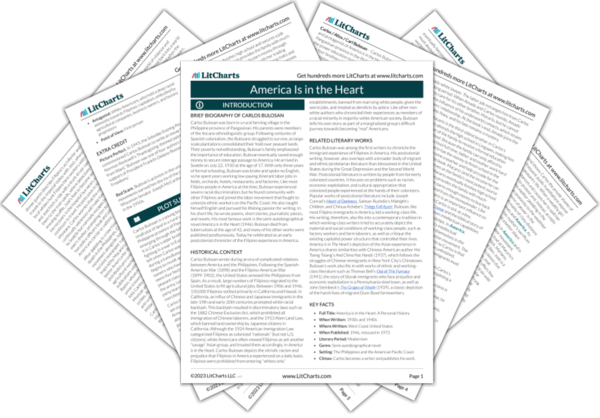Previous
Chapter 18
|
Previous
Chapter 18
|
America Is in the Heart: Chapter 19 Summary & Analysis |
Next
Chapter 20
|


Upgrade to unlock the analysis and theme tracking for all of America Is in the HeartAmerica Is in the Heart!
Get LitCharts A+